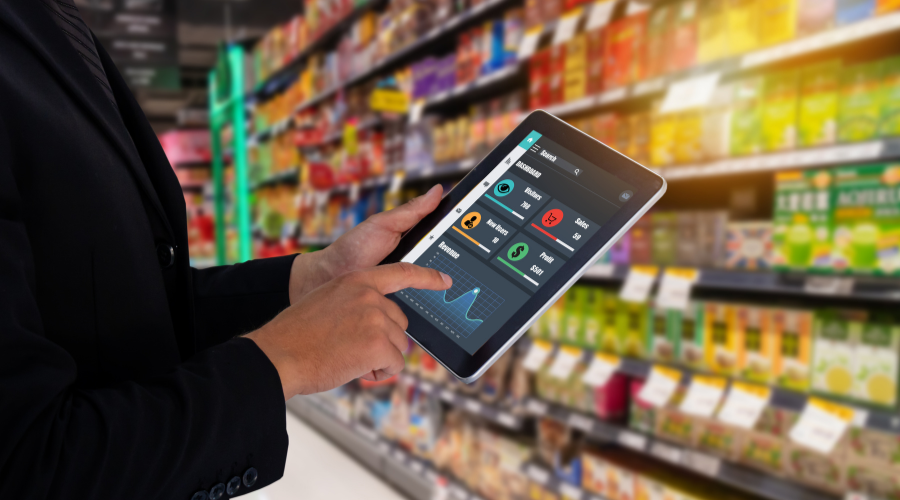1. Why Retail Analytics Matters
a. Overview of Retail Analytics:
Retail analytics involves utilizing data to optimize various aspects of retail operations, including customer behavior, inventory management, pricing strategy, merchandising, promotion, and loyalty.
b. Key Benefits of Retail Analytics:
Explore how retail analytics can provide insights into customer preferences, needs, and satisfaction. Understand its role in making informed decisions, increasing customer loyalty, boosting sales, reducing costs, and enhancing competitive advantage.
c. Industry Impact:
Delve into real-world examples of how retail analytics has revolutionized the industry, leading to improved customer experiences, more efficient supply chains, and data-driven decision-making.
2. What to Look for in a Retail Analytics Tool
a. Data Integration Considerations:
Evaluate the type and source of data you want to analyze. Consider whether the tool can integrate data from multiple sources such as POS systems, e-commerce platforms, CRM systems, social media, and web analytics.
b. Functionality and Features:
Assess the functionality and features of the tool. Determine if basic or advanced analytics are needed, and whether the tool supports the creation of dashboards, reports, and visualizations. Explore the necessity of machine learning, artificial intelligence, or natural language processing techniques.
c. Ease of Use and Scalability:
Consider the ease of setup, use, and maintenance of the tool. Evaluate its scalability to handle large volumes of data and grow with your business.
d. Cost and Value:
Examine the cost and value of the tool, ensuring it fits your budget and offers a good return on investment. Check for flexible pricing models, free trials, or demos.
3. Some Examples of Retail Analytics Tools
a. Google Analytics:
Explore the capabilities of Google Analytics, a free web analytics tool that tracks website traffic, conversions, and e-commerce data. Consider its integration capabilities with other Google products.
b. Tableau:
Discover Tableau, a data visualization and business intelligence tool that allows users to create interactive dashboards and reports from various data sources.
c. Shopify Analytics:
Learn about Shopify Analytics, a built-in tool for Shopify users designed to monitor and optimize online store performance.
d. RetailNext:
Understand the features of RetailNext, a comprehensive retail analytics platform that analyzes data from physical stores, optimizing store layout, merchandising, staffing, and marketing strategies.
e. Advanced Tools for Specialized Needs:
Introduce tools such as SAS Retail Analytics, Oracle Retail Analytics, and IBM Watson Customer Experience Analytics for businesses with more complex requirements.
4. How to Use Retail Analytics Tools Effectively
a. Define SMART Goals:
Establish Specific, Measurable, Achievable, Relevant, and Time-bound goals aligned with your objectives and performance metrics.
b. Choose Compatible Tools and Data Sources:
Ensure your selected tools and data sources are compatible, integrated, and regularly updated to support effective analysis.
c. Analyze and Generate Insights:
Utilize appropriate analytical methods and visualization tools to analyze data and derive meaningful insights.
d. Act on Insights:
Implement strategies based on insights, testing hypotheses, and experimenting with different approaches.
e. Monitor and Adjust:
Regularly monitor results against goals and key performance indicators (KPIs), learn from feedback, and adjust plans accordingly.
f. Continuous Learning and Training:
Encourage ongoing learning and training for your team to stay updated on the latest features and best practices of the chosen retail analytics tools.
5. How to Overcome Retail Analytics Challenges
a. Addressing Data Silos and Integration:
Integrate data sources to create a unified source of truth, overcoming challenges associated with data silos and enabling cross-channel analysis.
b. Ensuring Data Quality and Security:
Utilize tools for data cleansing, enrichment, and governance to maintain data quality and security, ensuring the validity and reliability of your analysis.
c. Promoting Data Literacy and Adoption:
Use tools that simplify and communicate data effectively to promote data literacy and adoption, empowering and educating stakeholders for maximum value.
d. Collaboration and Interdepartmental Communication:
Highlight the importance of collaboration and communication between different departments, breaking down silos and fostering a culture of data-driven decision-making.
e. Aligning Technology with Business Goals:
Ensure that your technology infrastructure aligns with the overall business goals and strategy, fostering a holistic approach to retail analytics.
6. Case Studies and Success Stories
a. Case Studies from Retail Giants:
Explore how major retail players have successfully leveraged retail analytics tools to transform their businesses. Understand the challenges they faced and the outcomes achieved.
b. Lessons Learned:
Extract valuable lessons from these case studies, identifying strategies and tactics that can be applied to your own retail analytics initiatives.
7. Future Trends in Retail Analytics
a. Emerging Technologies:
Discuss the role of emerging technologies such as augmented reality, predictive analytics, and IoT in shaping the future of retail analytics.
b. Personalization and Customer Experience:
Explore how retail analytics will continue to evolve to provide more personalized and enhanced customer experiences.
c. Integration with E-commerce and Online Retail:
Highlight the growing importance of integrating retail analytics with e-commerce platforms and online retail strategies.
d. Ethical Considerations:
Discuss the ethical considerations surrounding retail analytics, including data privacy, transparency, and responsible use of customer information.
Conclusion
In conclusion, the realm of retail analytics is vast and evolving. By understanding the significance of retail analytics, choosing the right tools, utilizing them effectively, overcoming challenges, and staying abreast of future trends, businesses can unlock the full potential of their data. Through continuous learning and strategic implementation, retail analytics becomes not just a tool but a catalyst for innovation and success in the dynamic landscape of retail.



